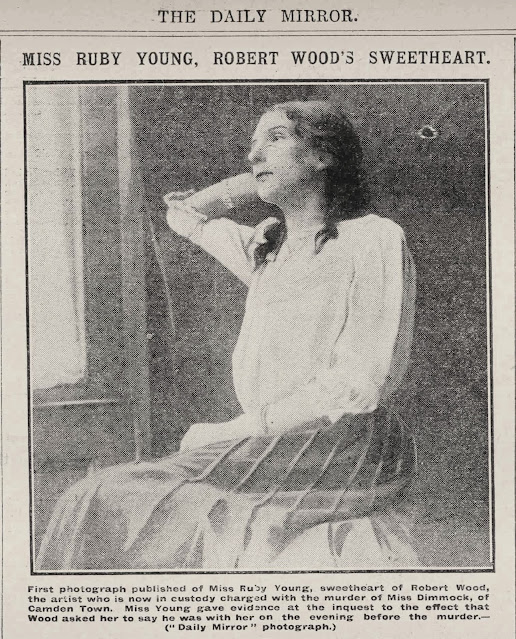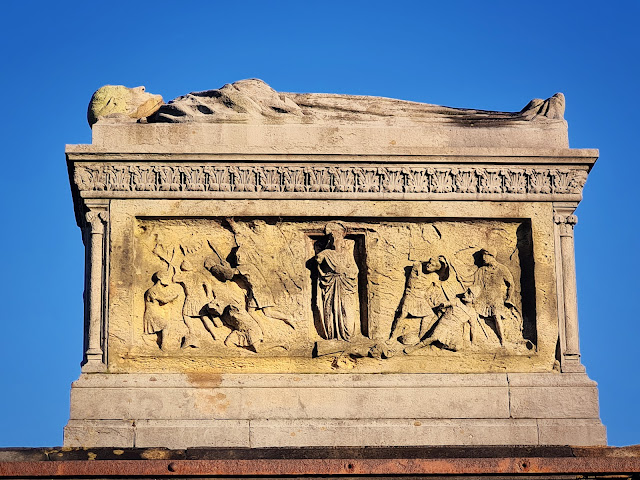Like
Westminster Abbey, St Paul’s Cathedral is not a place you pop into casually.
Unless you have an invitation to a Royal Wedding, are attending a memorial
service for a recently departed member of the great and the good or you can
convince one of the security staff that you actually want to go in and worship,
then the cost of entry is £26. The Church of England may be the 8th
biggest landowner in the country (200,000 acres) but they have 16,000 churches,
43 cathedrals and 2 archbishops to look after and, quite frankly, not enough
comes from the rents and the Sunday collection boxes to meet the cost of maintaining
their portfolio of historic buildings. So when the number of people wanting to
see an historic cathedral reaches critical mass, barricades and ticket booths
appear and the tourists have to pay a steep fee to gain entry. Charges are nothing new; St Paul’s has been
charging for admission since 1709, though it only cost two (old) pence to get
in at that time. The last time I was at St Paul’s must have been in the late
nineties when it cost about a fiver to get in.
I
was surprised by the number of funerary memorials there were in the Cathedral.
I simply did not remember there being so many. Many of them, the impressive
ones, date from the early 19th Century and commemorate the high-ranking
army and navy officers who died in the Napoleonic wars. Composed in the heroic,
neoclassical mode, they feature life-size, or larger than life-size, figures,
many of them, male and female, semi naked, bare breasted, and with superb
musculature, representing the final moments of the deceased’s life, sometimes on
death beds, sometimes on the battle field.
The deceased die in the arms of their comrades or are received by gloriously
Valkyrie-like Angels; these memorials are positively pagan, ‘pro patria mori’ celebrations
of death in combat.
One
of the most eye catching is the monument to Vice Admiral Cuthbert Collingwood,
the first Baron Collingwood. A semi naked Collingwood, eyes closed, lies on a funeral
barge, gripping his sword, supported over by an angel in a diaphanous robe. A
river god, old father Thames perhaps, disports in the water by the barge with
two naked putti clambering over him. The memorial was raised by public
subscription and was made by Richard Westmacott the second, best known for his
statue of Achilles in Hyde Park (in commemoration of the Duke of Wellington) and
the pediment on the façade of the British Museum. Collingwood was born in 1748
in Newcastle to a landowning family who had lost most of their estates when
Collingwood’s great grandfather had become a Jacobite and took part in the 1715
uprising to put the Old Pretender on the British throne (for which crime he was
eventually hanged at Liverpool). Collingwood joined the Royal Navy at the age
of 12 and rose through the ranks from midshipman to lieutenant to captain to rear
admiral, admiral and finally commander in chief of the Mediterranean fleet
following Nelson’s death. He fought in the American and French Revolutionary
Wars and was present at many of the most famous naval engagements of the time
including Cape St Vincent and Trafalgar. Despite his many opportunities to die in
battle, he actually succumbed to cancer in 1810. In agonising pain and knowing
that he was seriously ill and almost certainly dying, when his pet dog Bounce
fell overboard and drowned in late 1809, the dispirited Collingwood requested
to be relieved of his command in late 1809. The Naval authorities prevaricated
and initially refused his request. By February 1810 Collingwood could no longer
walk and the Naval authorities had to finally recognise that their supreme
field commander was about to die. He was given permission to return home but died
of cancer on board HMS Ville de Paris, off Port Mahon in Menorca, as he sailed
for England. His body was returned to England and taken by barge up the Thames to
Greenwich Hospital before finally being interred beside his former commander,
Lord Nelson in the crypt of the cathedral.
Down in the crypt, close by Nelson’s tomb (Nelson’s second-hand black marble sarcophagus was originally made for Cardinal Wolsey, but the Cardinal managed to disgrace himself with Henry VIII and was buried in an unmarked grave in Leicester Abbey. George III thought it would make a suitable tomb for Nelson) is the memorial for Admiral George Brydges Rodney, 1st Baron Rodney, who died in retirement in 1792. His memorial was originally upstairs in the nave of the cathedral but at some point, he was moved downstairs, upstairs being reserved for more illustrious deaths, such as that of Lieutenant-General Sir Ralph Abercromby who died in 1801. The monument is another of Richard Westmacott’s masterpieces and shows a wounded Abercromby being lifted from his horse and is flanked by two superb sphinxes. Abercromby was commanding the British forces against the French at the Battle of Alexandria in 1801 when he was struck in the thigh by a musket ball. Badly wounded, he refused to relinquish command or accept medical attention until the battle had been won. He was cheered from the battle field by his troops but his surgeons were unable to remove the musket ball from his leg. Infection set in and he died seven days later and was buried at Fort St Elmo in Valletta, Malta.
Close by Abercromby’s memorial is the monument to Sir John Moore, his second in command at the Battle of Alexandria. The monument, by John Bacon the younger, shows Moore expiring on the battlefield at A Coruña in 1809, after being "struck in his left breast and shoulder by a cannon shot, which broke his ribs, his arm, lacerated his shoulder and the whole of his left side and lungs." He did not die immediately but remained conscious throughout the remainder of the battle. He told his aide-de-camp, Colonel Paul Anderson "You know, I always wished to die this way, I hope the people of England will be satisfied! I hope my country will do me justice!" His final words were to Charles Banks Stanhope, "Remember me to your sister, Stanhope." He was buried in his military cloak on the ramparts of A Coruña and later a fine tomb chest was erected in his honour by the leader of the Spanish forces.
The memorial to Captain George Blagdon Westcott of the Majestic is by Thomas Banks and shows the soul of Westcott in a classical tunic being received by an angel on the deck of his ship. Westcott died at the Battle of the Nile in 1798. The Majestic collided with the French ship Heureux and became entangled in her rigging. Westcott was hit by a musket ball in the throat and killed. Westcott was from Honiton in Devon and was of rather humble origins, his father was a baker. Nelson visited Honiton in 1801 and visited Westcott’s mother, writing to Lady Hamilton “Captain Westcott's mother – poor thing, except from the bounty of government and Lloyd's, in very low circumstances. The brother is a tailor, but had they been chimney-sweepers it was my duty to show them respect.” Also by Thomas Banks is what was the first war memorial raised in St Paul’s, to Captain Richard Rundle Burges of HMS Ardent who died at the Battle of Camperdown in October 1797. Banks shows a near naked Burgess, his modesty preserved by a strategically placed piece of cloth tossed over his shoulder and ending just above his crotch, being received by a bare breasted angel. At the Battle of Camperdown Burges’ ship had singlehandedly engaged the much bigger Dutch flagship, Vrijheid, in what became the single bloodiest combat of the battle. Over a hundred men died on the Ardent, including Burges who was sliced in half by chain shot within the first ten minutes of the engagement.





































